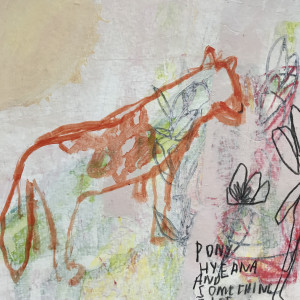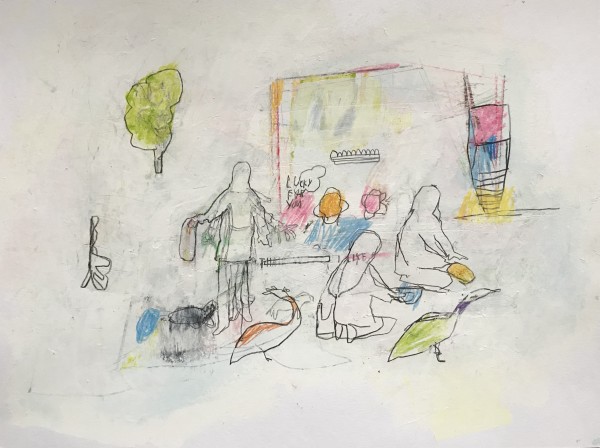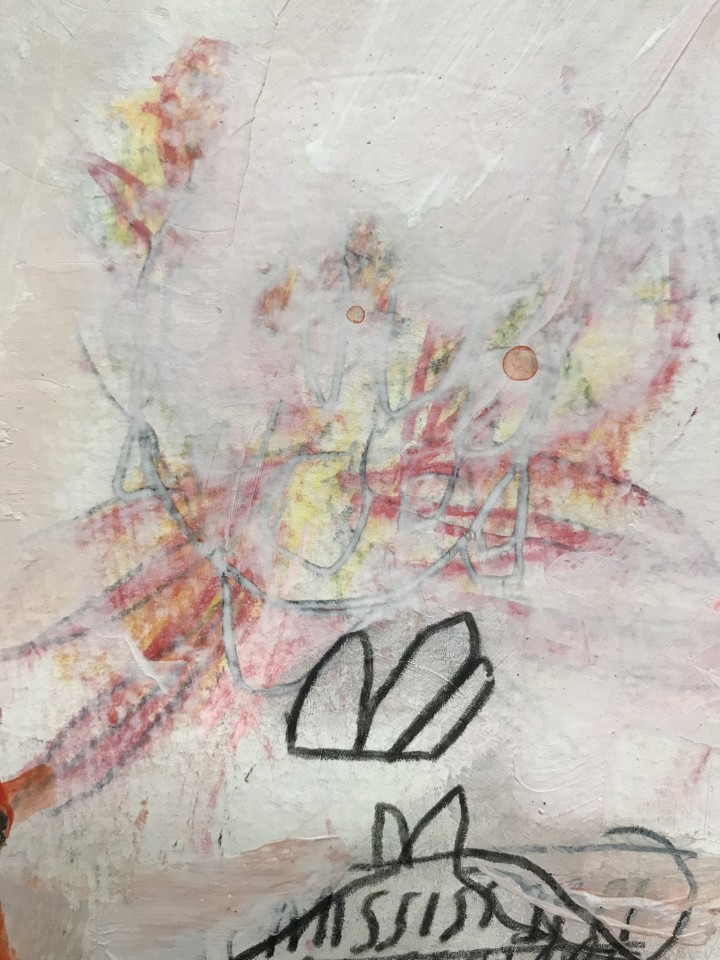
Detail, Jimmie James
pony, hyena and something else (Berlin, Germany)
2019
acrylic and colored pencil on watercolor paper
14.25 x 19 in.

Detail, Jimmie James
pony, hyena and something else (Berlin, Germany)
2019
acrylic and colored pencil on watercolor paper
14.25 x 19 in.
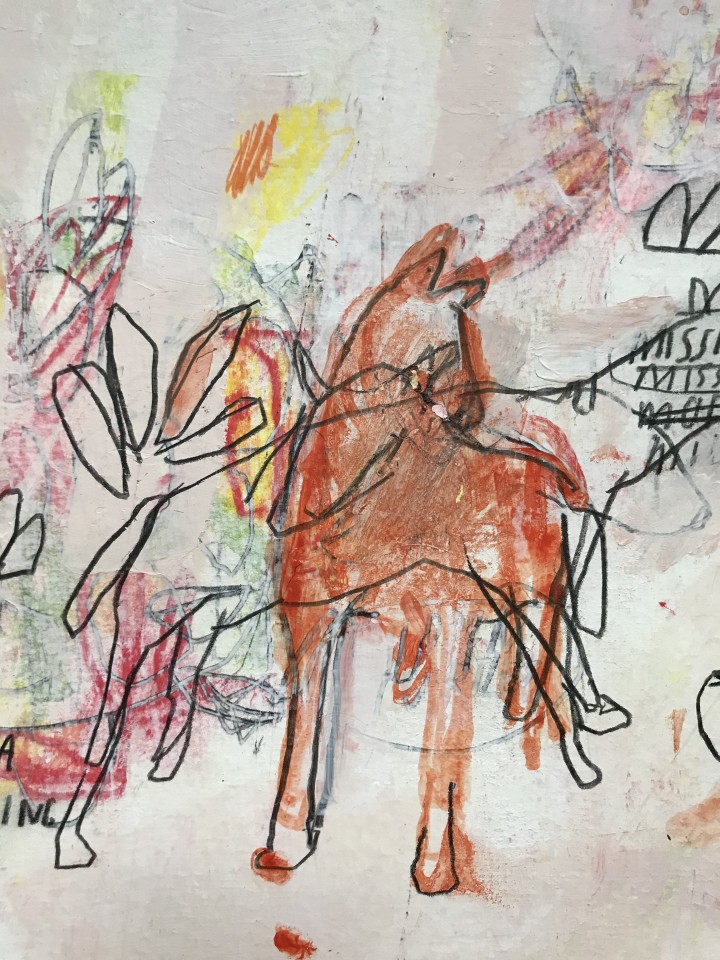
Detail, Jimmie James
pony, hyena and something else (Berlin, Germany)
2019
acrylic and colored pencil on watercolor paper
14.25 x 19 in.
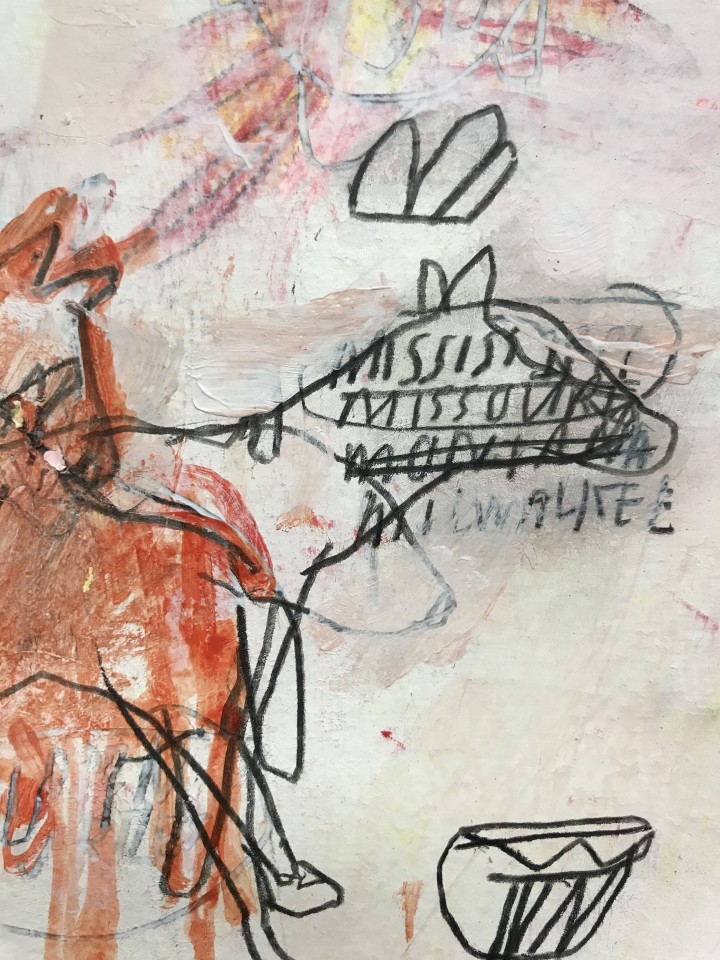
Detail, Jimmie James
pony, hyena and something else (Berlin, Germany)
2019
acrylic and colored pencil on watercolor paper
14.25 x 19 in.
Further images
Jimmie James' pony, hyena and something else (Berlin, Germany) is a spontaneously drawn, abstract 14.25 x 19 inch work with in colored pencils and acrylic on watercolor paper in a pale palette of whites through pale pinks and peach hues. Economical line drawings of a hyena and a pony in orange acrylic paint create the central composition, with a third animal defined by a simple pencil line intersecting the pony. Written in the artist's hand, "pony hyena and something else" gives the work a surreal, dreamlike quality. James' poetic compositions veer between figuration and abstraction: the recognizable and the mysterious. Painting out drawn elements, which at times are etched into the surface of the paper, activates a sense of the slow erasure of memory. Harnessing a powerful economy of line, James' figural drawings are imbued with a deep sense of humanity and emotion. James frequently uses automatic drawing in his work to free his hand from the control of his mind, shapes arriving on the support directly from his unconscious. This is an unframed painting on paper.
Born and raised in Brooklyn, New York, Jimmie James is a poet, painter, actor and singer/songwriter. This renaissanced artist has long been a fixture of New York City's art, theater and music scene, showing at a number of galleries including 571 Projects, Andrea Schwartz Gallery, Boltax Gallery, and Thomas Werner Gallery, to name a few. He has performed in works by theatrical luminaries including Richard Maxwell, Christina Masciotti, Danny Hoch, and Susan Lori Parks, and has composed for theater and film, where projects include Seth Zvi Rosenfeld's "Everything's Turning into Beautiful," Amos Poe's "Empire II."
Whether painting, performing or composing, Jimmie James' work remains accessible while refusing containment. He is doggedly trans-disciplinary: part shaman, part poet, part craftsman. Combining paint, fiber, word and image into tapestry-like works on canvas and paper, he creates pieces that exhibit a strong sense of emotional integrity and truth, through spontaneous, organic line work and considered use of color.



